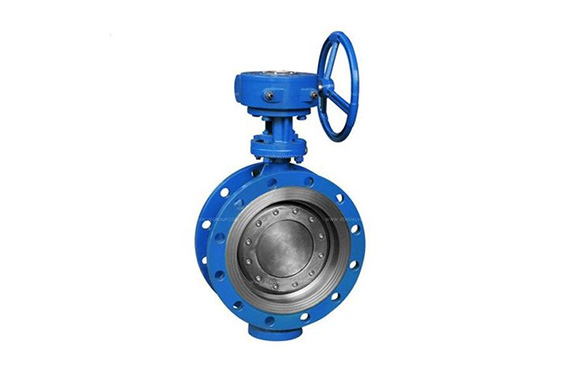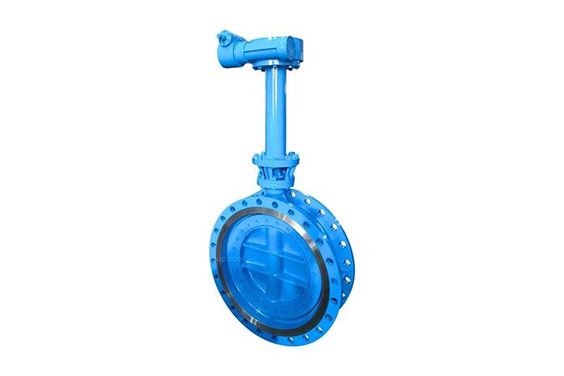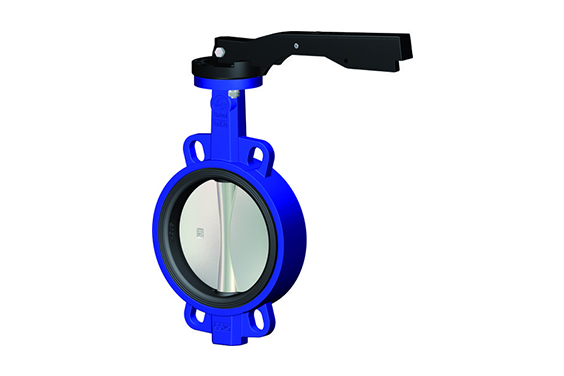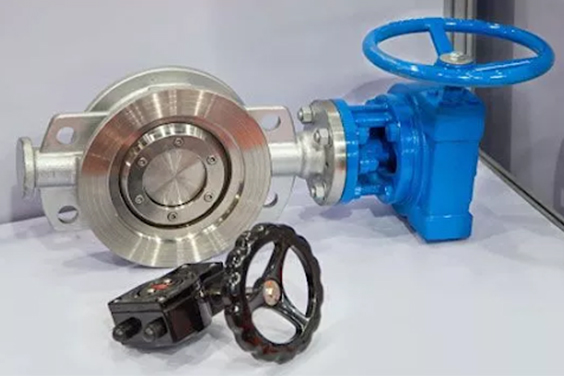Valves are the most critical component that is used in a plumbing system. To serve different purposes, different valves like gate valve vs butterfly valve are required in the system. They help in controlling the flow of liquid from one container to another. Furthermore, using a valve, the flow of fluid can either be started or stopped, based on the requirements. Both these valves find application in the valve industry.
That said, a valve should properly function to ensure there are no leaks and that the flow of liquid is controlled as and when desired. Regarding industrial valves, there are two common types generally used. One is the gate valve, and the other is the butterfly valve. Today we are differentiating both types for our readers to get a clear picture of each type. Though, there are several other types of valves available.
Both the butterfly and gate valves are different from each other in a significant way. They have different usage, working principles, and structural designs as well. Without further ado, let us know more about the two types to differentiate them better.
What is Gate Valve?
In the gate valve and butterfly comparison, the gate valve is the most common valve used in the systems delivering water. It is an isolation valve that works on linear motion and can either stop the flow or let it run through the system. This particular type cannot be used to control the flow of the liquid. Instead, they are used to either completely open or close the water flow.
If partially opened, the valve may cause damage. This feature of closing or opening the entire flow is responsible for its name, the gate valve. It functions as a gate enabling the slide of the liquid. Moreover, it’s a simple design, functionality and versatility make the component employed in a vast array of the low-pressure-drop-application. Furthermore, they are designed to be used as full port valves.
It means that the size of the valve port is the same as that of the diameter of the inner circumference of the connecting pipe. The systems where a full-bore gate valve is used experience the liquid flowing with the same pressure throughout. The flow doesn’t get obstructed, and neither the pressure is dropped. This also makes cleaning the pipe easy, with the help of a cleaning pig.
The gate valve design is less complex than the other options, so they are widely used. The general usage of these valves is with pipes that have bigger diameters. The diameter can start from 2″ and last up to the largest possible diameter. Several different options are available in gate valves.
They vary in material, sizes, pressure ratings, high-temperature ranges, and also the style of bonnets and gates. Also, the different types available include pneumatic and electric actuator gates. The cost-effective ones are the manual valves because they are occasionally used.
The gate valves are classified into three different types based on certain factors. They are disk, body bonnet joints, and stem movement designs.
Disk Designs
- Flexible wedge.
- Solid tapered wedge.
- The split wedge or parallel disk valve.
Stem Movement Designs
- The non-rising stem type.
- Rising stem, or the OS and Y type.
Body Bonnet Joint Designs
- Bolted bonnet.
- Screwed bonnet.
- Pressure seal bonnet, and
- Welded bonnet.
It’s time to head over to the butterfly valve.
What Is A Butterfly Valve?
Butterfly valves are another type of valve used to turn the flow off in pipelines. They are rotational motion valves that turn quarter and offer better results. They are often mentioned as one of the best ways of controlling the flow of liquids. Though experts don’t suggest this because the valve disk can be harmed, and the sealing characteristics can also be compromised.

They are easy to use, with convenient open and close options. The user needs to rotate the handle 90 degrees to easily open or close the valve. The larger butterfly valves are usually integrated with a gearbox that helps connect the stem to the handwheel through gears. This composition makes the operation easy, but at times the speed of the valve can be compromised.
The butterfly valves are leveraged in various processes, including industries and media. Furthermore, they can collect, supply, and distribute water. Furthermore, they are also used in pumping stations for various uses, mainly flow isolation.
This type of valve offers some primary advantages compared to the other valve families. The benefits offered include compactness and easy fabrication. It results in low-cost and lightweight end products. Also, the products manufactured have faster actuation rates and smaller installation footprints.
The butterfly valves are available in multiple shapes and sizes for people to choose the best one based on their needs. Different options are best suited for different purposes and pressures. When it comes to the butterfly valves are available in three offset designs;
- The zero offset or concentric butterfly valve.
- Double offset or double eccentric butterfly valves.
- Triple offset or triple eccentric butterfly valve.
Also, the design of the body of butterfly valves differs as well. The different body types of butterfly valves available are;
- Water type butterfly valve,
- Lug type butterfly valve,
- Butt welded butterfly valve, and
- Flanged butterfly valve.
Gate Valve vs Butterfly Valve
Now that the definition of the two types is clear, it’s time to know the points of distinction between the two valves.

- Working Mechanism
In a gate valve, the flow of the medium is controlled by a gate. The valve’s gate is a solid rectangular or circle disk attached to the stem and acts as a barrier to liquid flow. The gate valves are operated with the help of an actuator, like the handwheel. At the time of opening of the gate valve, the threads of the valve stem are converted by the energy into the gate, and the opposite is the case when it is closed.

The gate valve is also a multi-turn valve since the user must turn it 360° to completely open or close it. The gate of the valve is placed tightly in between the two seats. Hence, once the valve is closed completely, there are no chances of a leak.
On the contrary, with a butterfly valve, the operation resembles a ball valve. They are commonly used since they are available at a lesser cost than the other types. Also, they need less support and are available in small sizes. A rod is present in between that connects the actuator to the disc on the outside. By rotating the actuator, the disc present can be turned parallel or perpendicular to the flow.
The butterfly valve belongs to the family of quarter-turn valves. The disc must be turned a quarter, after which the valve is either open or closed altogether.
- Common Application
The sealing property of the gate valve is excellent, so they are more often used for pipelines where tight sealing is required. Though they cannot support frequent switching, they are installed in pipelines that don’t require frequent switches. These valves can only be used in entirely open or closed situations. Also, they cannot be used for installations that require regulating or throttling the medium-level flow rate.
This is because accurate control is not possible with gate valves. That said, the gate valves are used in larger piping systems that need a regular flow of bi-directional liquid and gas. Additionally, it is also used in media discharges that are uni-directional and time-based.
The butterfly valves available are lighter than the gate valves, which is why they are easy to use and install in pipes with larger widths. They are the best choice to be installed in small spaces where they are advised to install. Also, more than the gate valves, butterfly valves are installed in larger sizes because of their lightweight and convenience.
They are ideal for applications that require frequent opening and closing. This is because they can be operated as many times swiftly and are hence the best choice to be installed in pipelines that require emergency opening and closing. Also, they filter out the tiny contaminant particles available in the liquid and are ideal for such an application.
These valves are also high-performance since they are used in conditions with high to moderate pressure and temperatures.
Advantages and Disadvantages of Valves
Below mentioned are some of the advantages and disadvantages of various types of valves:

Advantages of Gate Valves
- The design of the body of the knife gate valve is straight, and this is how unrestricted flow of liquid is allowed in a completely open position.
- Its wedge operation is slow, so a water hammer is prevented.
- No residue is left in the pipes.
- Compared to its counterpart, the gate valves can easily withstand high pressure.
- Gate valves have a wide range of applications and are extraordinarily adaptable. They can be installed for various mediums, including oil, steam, and other liquids.
Disadvantages of Gate Valves
- The flow of the medium can only be completely closed or open, with no adjustments offered in the flow.
- The gate valve is prone to scratches since excessive pressure causes friction between the sealing surfaces and the gate. Also, the opening and shutting of the cases result in scratches on the sealed surface.
- Compared to the butterfly valve, gate valves require more space for installation and operations.
Advantages of Butterfly Valves
- Butterfly valves can be used to throttle the fluid flow and conveniently control them.
- Compared to the gate valves, they take up less space for the installation procedure because they are available in compact sizes and are light in weight.
- They are best for emergency shut-offs since they have rapid operation times.
- Compared to the gate valves, they are an economical option in larger sizes.
Disadvantages of Butterfly Valves
- Butterfly Valves can obstruct the liquid flow in the pipeline because they leave a residue.
- The movement of the disc has no proper guidance, so the turbulence flow influences it.
- Butterfly Valves have a high possibility of water hammers.
- Because the disc is available in the flow channel evermore, it can be prohibited from moving because of thick liquids.
Why Choose Industrial Valves From Dombor?

Dombor is a leading producer of industrial valves, and its products are all of superior quality to offer the best results. Some extraordinary features which make the valves from Dombor stand out are:
- The easy-to-use construction of the valves requires minimal manpower. Having that said, when a business buys valves from Dombor, they will not have to worry about controlling operations.
- The flexible design of the valves lends itself to various industry applications.
- As and when required, fluid flow is unobstructed with valves installed since the gate or butterfly valves offer minimal resistance.
- The gate and butterfly valve of Dombor are automated for easy operations.
- The butterfly valves are lightweight options since the ones available from Dombor have narrow dimensions and are easy to install.
Final Thoughts
Both butterfly valve vs gate valves has their sets of advantages and disadvantages. Also, choosing one valve depends on various factors, and you must pick the best one suited for your needs. The gate valves are ideal for butterfly and gate valve applications that require strict sealing. On the contrary, butterfly valves are ideal if a valve is needed for throttling purposes that take up less space.
Though butterfly valves are more commonly used because of their high-performance abilities. For purchasing high-quality and reliable valves from a reliable supplier, please contact us.









